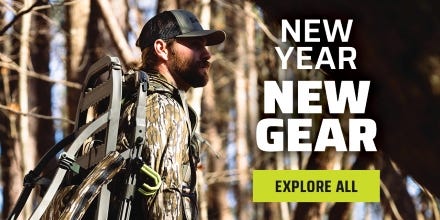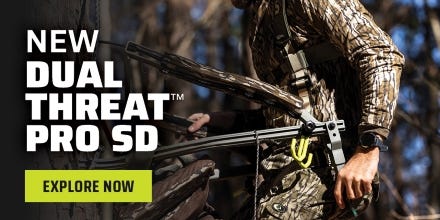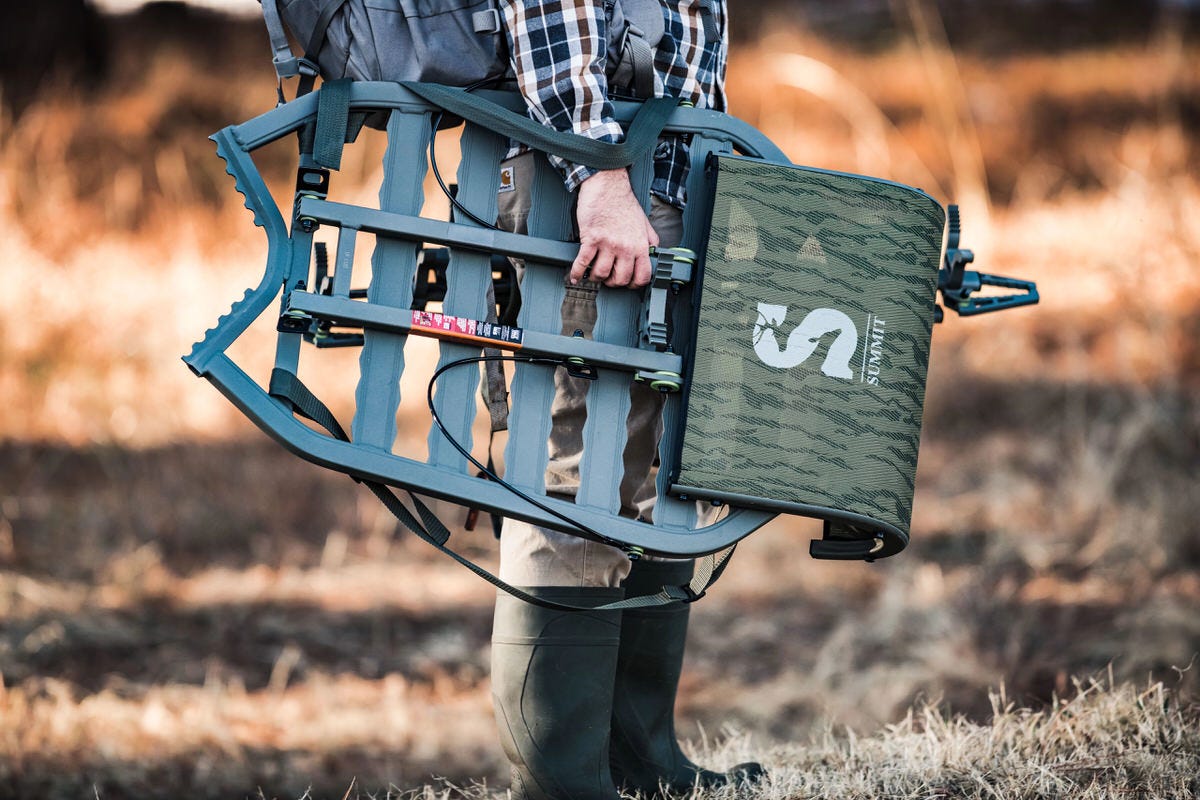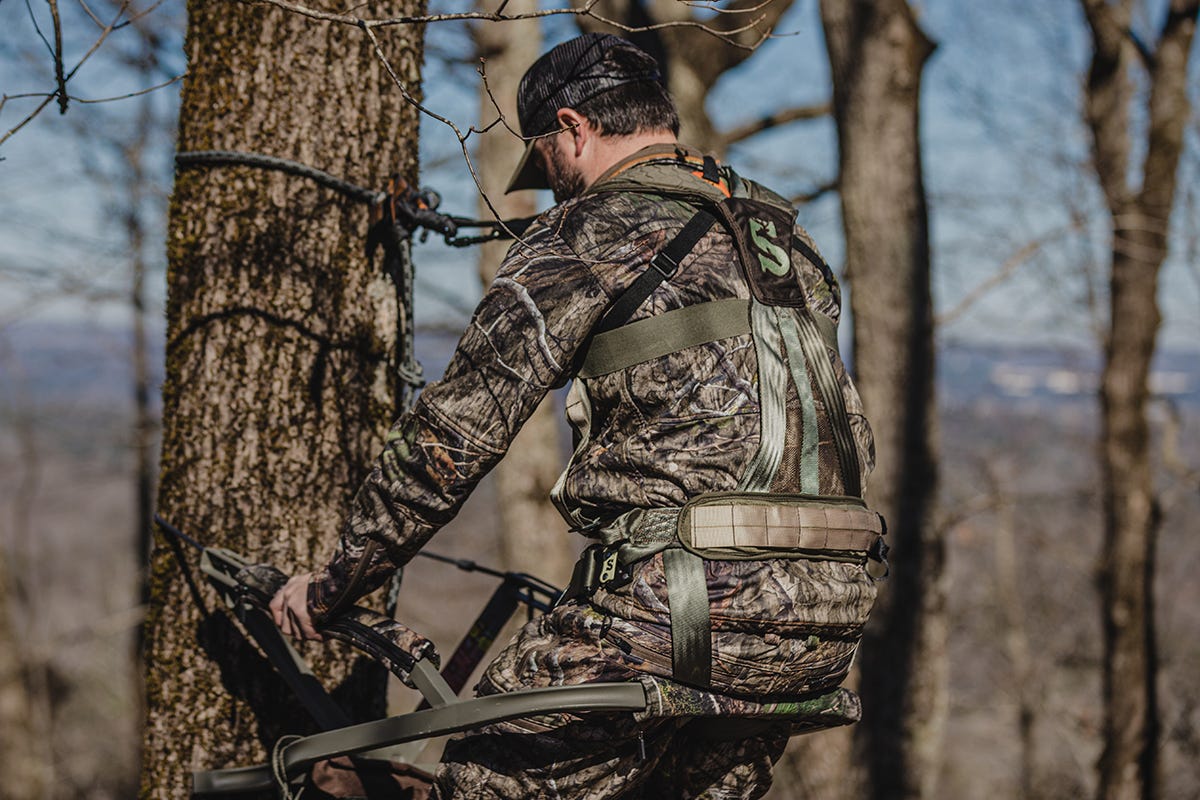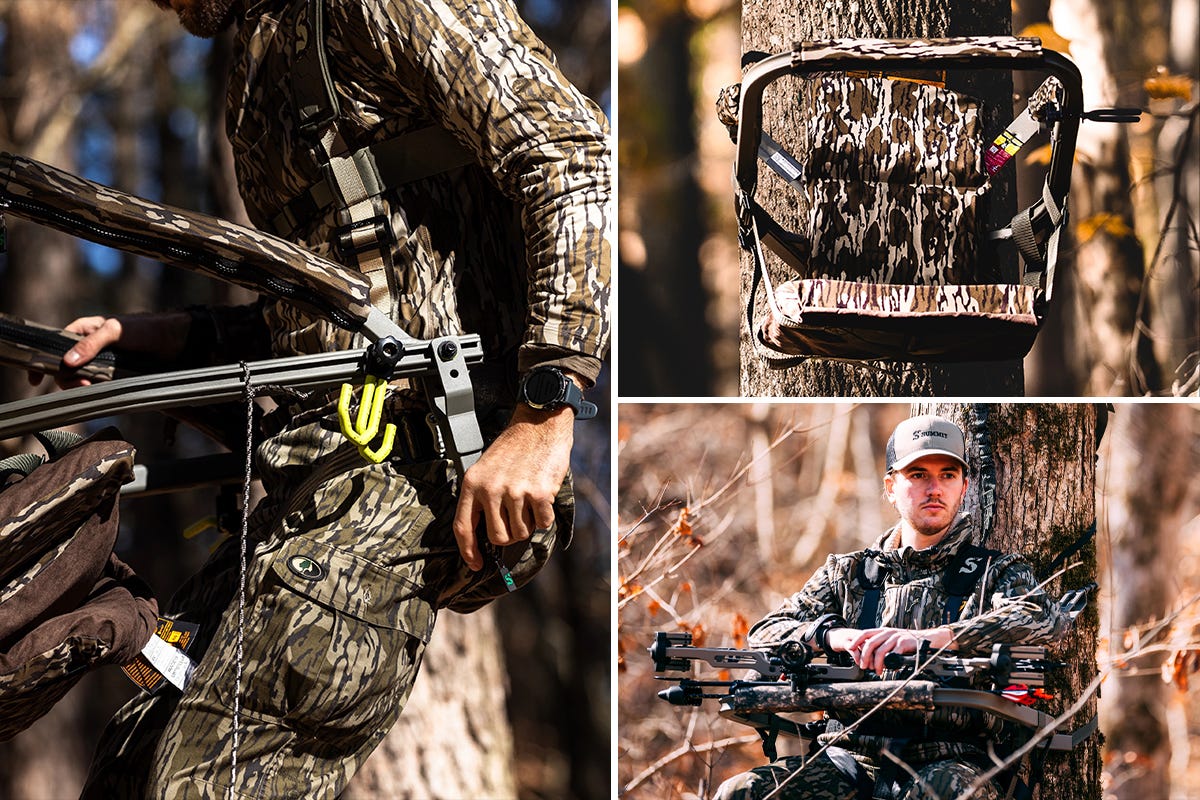- May 17, 2018
Treestand Buyer’s Guide
Treestands, like fishing lures or game calls, are job specific – you wouldn’t go deer hunting with duck calls would you? Similarly, hunters should equip themselves with the stands that were engineered and built to fit their specific needs.
One of the main considerations when shopping for a treestand is the terrain. It’s important to understand how far you’ll be hiking to and from your stand location, and at what frequency you anticipate making stand location changes.
Understanding the predominant tree type in your hunting area also plays a role in finding the perfect tree stand for you. Certain tree characteristics like trunk size, straightness, and the height at which branches begin to shoot off the trunk should all factor into your decision.
Finally, it’s important to think about how you’ll be transporting your stand to and from the hunting location. Portability and set up/take down time are very different from one stand type to the next, and will have a big impact on the way you’re able to hunt.
CLIMBING TREESTANDS
Climbing treestands are all about mobility. This stand type allows the hunter to hike into any spot, find a suitable tree, and ascend it using the stand as a climbing mechanism to begin hunting almost immediately.
The climbing function is made possible by the two-piece chair and platform design. With the platform and chair secured around the tree, simply raise the upper portion, put your weight on it and draw your legs upward with your feet then "lock" the lower platform, into the tree with your body weight and repeat the process - basically "inch worming" your way up the tree.
While climbers excel in their portability over other stand types, before you run out to buy one, consider the terrain you will be hunting in. Because a climbing tree stand requires the stand be in constant contact with the tree all the way from the base of the tree’s trunk up to the intended hunting height, it is extremely important the trees in your hunting terrain have no large low-level limbs. Limbs protruding from the trunk between the base of the tree and the intended hunting height make climbing impossible. If your hunting area has huge cottonwood or oak trees, you might not be able to wrap the climbing cable or strap around the tree, making it impossible to use a climber.
But, if your terrain allows a climber, they are without-a-doubt the quickest, and one of the easiest ways to hunt from a tree.
HANG-ON TREESTANDS
Hang-on treestands, also known as lock-ons, are popular because of their versatility. Where other treestand types may be limited by the size or shape of the tree, a Hang-on treestand works well in nearly any type of tree.
In addition to versatility, lock-on stands are generally quieter than other stand types, a necessity when animals are in super-close proximity.
Lock-on styles are also popular because they are light weight. Most models are under 20 pounds, making for easy portability to and from the hunting spot. If stand location changes are a regular part of your hunting routine, a hang-on may be the best option for your hunting style.
Hang-ons provide most of the same comforts provided by a ladder stand, or tripod, without the added weight of a ladder.
Since lock-ons don’t have a built-in climbing function, like a ladder or climbing cables, climbing accessories are necessary to get from the ground up to the stand location. Climbing steps, or sticks, are relatively easy to install, quiet and can be carried with you when packing in. Some public hunting areas restrict the use of screw-in type steps, so strap-on steps or climbing sticks must be used.
LADDER STANDS
For hunters who are more concerned about comfort and stability and don’t care about weight, a ladder stand is just the ticket. Ladder stands have some advantages that the climber and hang-on stands don’t. With a ladder stand, as the name implies, is a fixed-position stand integrated into a ladder that comes in three- or four-foot sections, for easy transport. This gives you an easy way to get up into your favorite tree without having to shimmy up the trunk, negotiating limbs and small branches.
This is especially important to hunters who are looking for the most user-friendly and safe tree stand option available. For those who suffer from acrophobia (fear of heights), many ladder stands have large platforms for more stability and comfort, making the time spent in the stand more comfortable. Larger platform models will usually allow you to install a padded bench seat and even a skirt or complete blind to add comfort to your time aloft.
The biggest drawback to the ladder stand is its lack of portability. Since most ladder stands are made of steel and have an average weight of 45 pounds, they are for hunters who can are able to set up their stand and leave it for the remainder of the hunting season. Though ladders are certainly not ideal for hunters looking to make quick or frequent stand location changes, they are the most comfortable option to hang on the stand location that has helped you fill your last three tags.
If you’re interested in being high above the forest floor, it’s important to point out that MOST ladder stands can’t be installed more than 20 feet high. Even at that height, an additional ladder section and support brace between the tree and ladder should be installed to ensure safety and stability. While not for the hunter looking to make frequent moves, ladder stands rank high for stability, safety, and comfort and are a great choice as a main stand to be left at your honey hole for the entire season.
TRIPODS
Hunters who wander the Southwest among sagebrush or hunt agricultural crops on the prairie of the Midwest find it painful to mount a tree stand on a cactus and ineffective to mount one on a fence post. Tower, tripod or "platform" stands have been especially designed for these situations. In most cases, tower stands sit on three or four legs and come with a platform and some have an enclosure to give you concealment from the elements and the eyes of a wary buck.
Tripod stands set up on three legs with a padded seat or "platform" that usually rotates 360 degrees for an unlimited field of view. Since they are bigger and more visible than other types of stands, it is important to place them beside a large bush or rock to make them more inconspicuous to game. Once in place, leave them permanently and animals will get used to them over time like any other structure.
SAFETY FIRST
All Summit stands include a standard safety harness.
Summit thinks the most important piece of equipment that you can take into the woods is a safety harness that is certified to meet TMA standards. That is why Summit devoted much of its engineering expertise into developing Summit's comfort-engineered line of harnesses as we have developing treestands.
Summit safety harnesses and accessories are designed to protect against falls without limiting movement. Comfortable and functional, each hunting safety harness includes a lineman-style climbing belt, adjustable design, and leg straps that won't cause groin injury in the event of a fall. Our harnesses have all of the features you need for ultimate hunting safety and fall protection.

